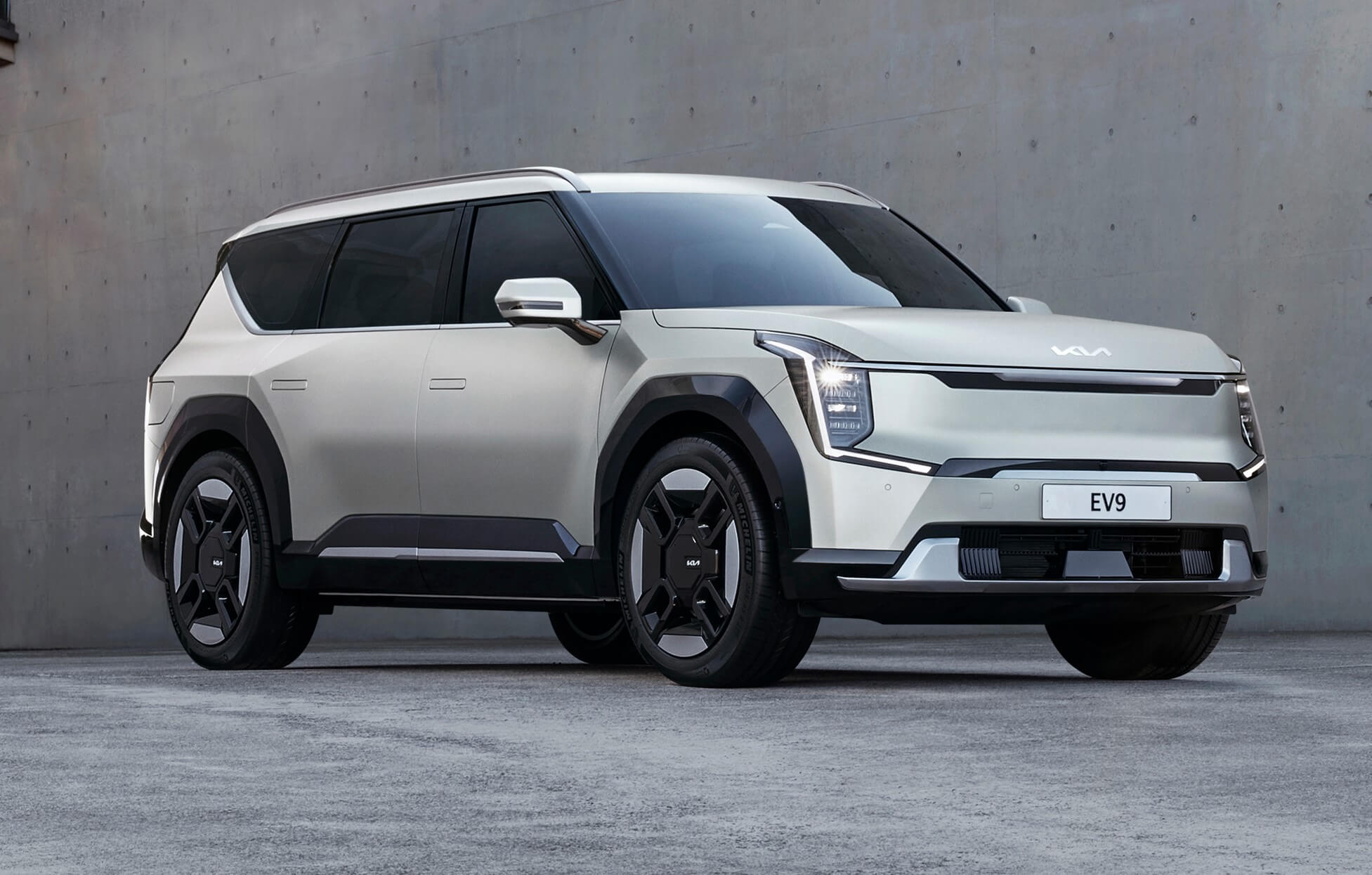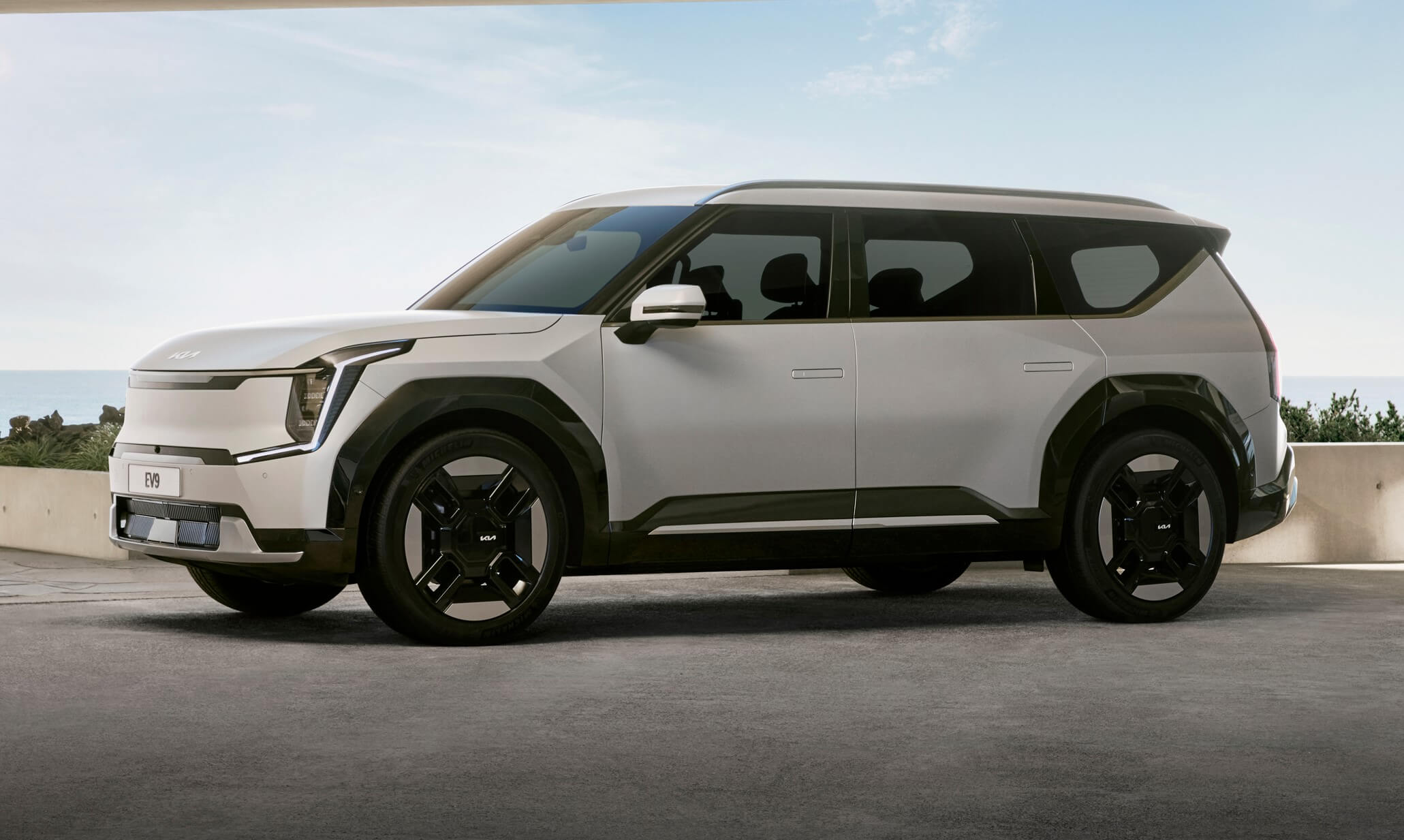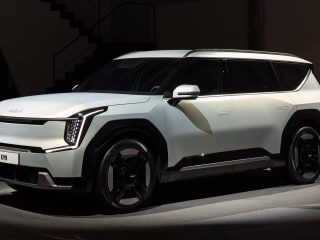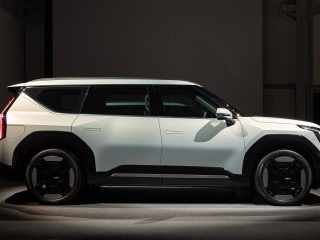Kia’s range-topping EV9 has been revealed, offering six or seven seats, up to 540km of range, and a price tag that could cost more than $100,000.
Kia has been stretching the limits of its line-up and pricing over the past few years, with the most expensive Sorento to date and then the EV6, a pure-electric model that almost breached six figures. But here’s proof that the Korean brand isn’t finished yet: this new flagship, the EV9, could well smash the $100,000 barrier.
The EV9 is designed to be the largest and most expensive zero-emissions vehicle in the Kia range. It’s one of 14 new EVs that the company will launch globally over the next five years, and is the first of nine that will make it into Australian showrooms when it launches here late-2023.
The new creation is an overtly upright, blocky SUV that’s larger than the Sorento – more in line, in fact, with the five metre-long Telluride that Kia sells in the United States. That means it’s only very slightly shorter than the current Range Rover. It’s conceived as a seven-seater, although it will also be available in a six-seat layout, complete with two individual centre-row seats.
The car was previewed by a concept at the Los Angeles Auto Show back in 2021 and the production model sticks pretty closely to that vehicle’s lines.
The roof is a little lower, because the EV9 sits on slightly smaller 21-inch wheels, plus the concept’s rear-hinged back doors have been replaced by more conventional items, and there’s less ground clearance, courtesy of a proper floor that’s now thick enough to contain the battery pack. But the overall profile of the finished production car looks remarkably similar. The front features a fresh interpretation of Kia’s family grille, adapted for the greater height of this model compared with the EV6.
Kia’s designers say that the phrase ‘tiger face’ needs to replace the ‘tiger grille’ that featured on combustion-engined cars, since the EV9 doesn’t have a grille at all. There’s a framed body-coloured panel, and at either side of it, laser-etched areas of the body will allow patterns of LED light to filter through; users will be able to choose these designs through the infotainment system.
The daytime running lights at either side of the ‘tiger face’ are intricate vertical items inspired by star constellations, meanwhile; Kia calls them ‘star maps’ and says that they will be a feature on subsequent models.
The car’s bodywork includes a mixture of treatments. Some of the largest panels are extremely clean; the bonnet itself has no power dome like you’d find on a combustion-engined vehicle. But in line with Kia’s design philosophy of contrast, while the main flanks have only gentle curves, the adjoining shoulders are created by huge, brutal squared-off wheelarches, flared out through edgy triangular motifs. These give the car a strong, chunky look, almost like a Tonka toy.
Inside, there are warmer, more natural-looking materials than in the EV6, with fabric used in some key areas instead of textured plastics. The dashboard introduces a new design principle that will feature on Kia’s subsequent EV models; there’s just a single instrument and infotainment panel incorporating multiple displays, as on the EV6, but the contextual touch-sensitive buttons below have been replaced by a cleaner design with haptic feedback. Some of the more detailed functions of the heating and ventilation system have moved to the display, although the basics are taken care of by physical switches. There’s still a regular volume control, too.
Kia’s interior team, led by Jochen Passen, has worked hard on scalloping out areas of trim – around the arm rests, and on the upper edge of the fascia, to help create ‘negative space’ and make the cabin feel more spacious, open and relaxing.
The designers have also made use of the EV’s flat floor to create flexible storage solutions, including a small slide-out table between the front seats. In six-seat mode, the centre seats can be rotated to face backwards, although this may not be legal when the car is being driven, depending on local legislation.
When the seats are folded down, they create a flat surface to make it easy to slide in longer loads. There’s also a hard-plastic ‘frunk’ beneath the bonnet; it’s relatively modest in size, given the overall scale of the vehicle, but it should be large enough to accommodate a charging cable.
The EV9 uses the same underpinnings as the EV6 and Hyundai’s Ioniq 5 and 6 – the bespoke, all-electric e-GMP platform. Kia hasn’t issued any technical details yet, but it’s safe to say that with the need to carry up to seven people, engineers are likely to use the stretch in wheelbase to cram in more battery modules.
That could see an increase from the EV6’s 77.4kWh maximum capacity to around 100kWh; Kia told investors last year that the target range for the EV9 is up to 540km, and it seems improbable that this could be achieved in the bigger car without an accompanying jump in battery size.
The new arrival will stick with 800-volt technology, though, and as a result, it’s likely to offer similar fast-charging speeds to the EV6’s – up to 233kW when hooked up to a fast enough point.
The e-GMP platform can accommodate rear-wheel-drive and twin-motor all-wheel-drive configurations, and it seems likely that the EV9 will be available with both of these. Kia is aiming for the new car to have a 0-100km/h time of five seconds, which is roughly equivalent to the acceleration of the all-wheel-drive EV6. The company has already confirmed, meanwhile, that as part of its ‘Plan S’ strategy, it will develop a high-performance EV9 GT, to sit above the 430kW EV6 GT in its portfolio.
The EV9 should land in Kia’s Australian showrooms later this year, with first deliveries expected toward 2024. There’s no word yet from the company on pricing and specifications, but given where the EV6 tails off, we’d expect the new flagship’s range to start at around $80,000 – potentially with a single motor and the smaller 77.4kWh battery – and rise to as much as $100,000 for fully laden 100kWh seven-seat editions with dual-motor power.














